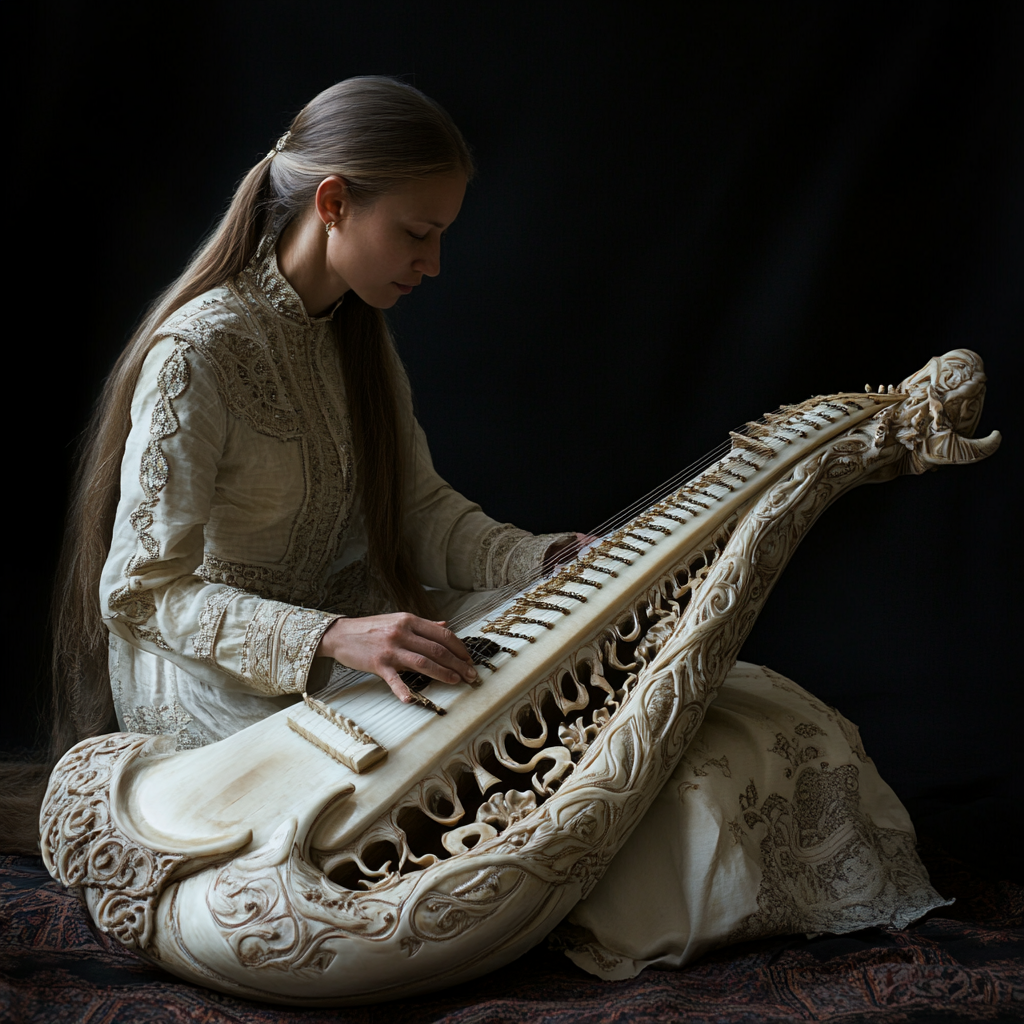Musical instruments are not just things that produce sound. They are the result of centuries of history, culture and craftsmanship that has been passed down from generation to generation. Each instrument has its own unique voice, created not only by the materials from which it is made, but also by the way it was made and tuned. Musicians and craftsmen, working with each instrument, put their soul into it, creating something more than just a means for creating music. We can observe how the shape and sound of an instrument are influenced by the artistic influence of the master, which makes each instrument unique in its own way.
History of musical instruments: from the first sounds to the present
Musical instruments have existed since the beginning of human history, and their evolution has been an integral part of the development of human culture. The first instruments probably appeared in the Stone Age, and these were simple objects such as bone flutes or stone percussion. However, over time, depending on cultural and technological changes, the tools became more and more complex.
Musical Instrument Basics were laid down in the earliest civilizations such as Ancient Egypt, Mesopotamia and China. In Egypt, stringed instruments were used, and in Mesopotamia, percussion instruments were used. In Ancient Greece, musical instruments were an integral part of theatrical performances and religious rituals. As technology and knowledge advanced, instruments became more complex, allowing for the creation of a greater variety of sounds.
During the Middle Ages and the Renaissance, musical instruments became an integral part of everyday life. This time gave the world famous string instruments such as the lute, as well as developed percussion and wind music. Later, during the Baroque era, the piano and organ were created, which laid the foundation for the development of classical music. Along with the growth of skill and experience, musical instruments reached new heights, and their sounds became powerful and varied.
Materials and technologies that determine the sound of instruments
When we talk about creating musical instruments, it is important to understand that each material used to make them has a huge impact on how they sound. While modern industry offers a variety of artificial and synthetic materials, traditional instruments are still made from natural resources that have been used for centuries to create their unique voices.
Here are a few key materials that play an important role in the production of musical instruments:
- Wood – the most important material for string and wind instruments. It is used in cellos, violins, guitars, and also in some wind instruments such as clarinets and flutes. Each type of wood has its own unique properties that affect the resonance and sound of the instrument.
- Metal – used in the production of wind instruments (trumpets, saxophones), as well as in some stringed instruments such as harps. Metal can add brightness, edge, and a metallic sound to the sound.
- Leather – traditional material for drums and percussion instruments. The quality of the leather determines the sound of percussion instruments, giving them a soft or harsh sound.
- Ceramics and glass – used in the production of some ancient instruments, such as ceramic flutes.
The combination of these materials creates the unique sound that we hear when playing the instrument.. The use of innovative technologies can improve the sound characteristics and increase the durability of instruments, but traditional materials remain important to this day. It is important to note that each instrument is unique in terms of the combination of materials that makes its “voice” unique.
Manual labor and the art of the master: how unique instruments are created
Making musical instruments is a real art. Craftsmen, when working with materials, take into account many factors, such as the density of wood, its texture, humidity, and the effect of time on the material. Manual labor in the production of an instrument allows the craftsman to influence every detail, and the result is an instrument that has a certain sound that cannot be reproduced at the factory level.
Each master creates an instrument taking into account the individual characteristics of the wood, so even two identical instruments can sound differently. An important part of this process is setting up the tool. Tuning and adjusting each element (strings, valves, pegs and other parts) affects the final sound. Even the slightest change in these processes can significantly change the sound of the instrument. Tuning is an art that requires not only knowledge, but also feeling, intuition, experience and patience.
Carrying out all these steps by hand ensures that each instrument is unique, even if it was made using similar techniques. Thus, manual labor in the production of musical instruments is not just a labor-intensive process, but a real philosophy that puts the soul into the instrument.
Instruments as a reflection of cultural traditions and eras
Musical instruments have always been not only a part of musical culture, but also a symbol of cultural identity. They reflected the history, way of life, beliefs and traditions of peoples, as well as connections with a certain era. For example, string instruments are often associated with classical European music, and woodwind instruments with the traditions of the East.
Each nation has its own instruments, which have become symbols of its culture.. Indian sitars and tablas, Arabic ouds and darbukas, Japanese shamisen and Chinese guqin – all these instruments have become an important part of the musical tradition of their countries. At the same time, in Europe, pianos, violins, organs and other stringed instruments occupy an important place in the musical heritage.
In addition, instruments were often created taking into account traditional holidays and rituals. For example, drums in Africa were used not only to create music, but also to communicate, convey information, and influence the community. Thus, musical instruments became not just means of expression, but also elements that connected people with their cultural heritage.
How an instrument “finds” its voice: the role of tuning and care
In order for a musical instrument to sound perfect, it must be properly tuned and cared for. Even if an instrument has been manufactured with the utmost precision and from the highest quality materials, it will not sound its best if it is not tuned correctly. Tuning is the process by which the master, and then the musician, adjusts the sound of the instrument so that it is ideal for playing music.
In addition, proper care of the instrument affects its durability and preservation of high sound qualities. It is important to regularly check the condition of the strings, valves, tuning mechanisms and other parts. Instruments such as pianos require not only tuning, but also professional maintenance to maintain consistent sound over the years.
Caring for an instrument includes not only technical adjustment, but also the creation of conditions for its storage. For example, some instruments require certain levels of humidity and temperature. Careless handling of the instrument can lead to its deformation, which will negatively affect its sound.
In the modern world, musical instruments continue to maintain connections with traditions, but also actively use innovations and modern technologies. For example, digital instruments such as synthesizers have become popular among musicians because they can create sounds that cannot be achieved with traditional instruments. However, this does not exclude the importance of handcraft and natural materials, which remain relevant.
Designers and engineers are using new materials such as composite fibers, plastics and metals to create instruments that are not only lighter, but also have improved acoustic properties. Modern technology can also improve the sound characteristics of traditional instruments, making them more versatile
Musical instruments are not just tools for producing sound, but also works of art that reflect culture, history and craftsmanship. The production of each instrument is the result of many years of work by craftsmen who put a piece of their soul into each instrument. Although technologies and materials change over time, the process of creating and tuning instruments remains as important and relevant as it was thousands of years ago.Modern musical instruments, like their predecessors, continue to be an integral part of musical culture, and their development does not stop. Innovation and tradition merge into unique compositions that allow musicians to create sounds filled with deep emotion and history.
Manual labor allows the master to fully control all stages of the creation of the instrument, which makes it possible to create a unique sound that reflects skill and individuality. Each handcrafted instrument has its own unique “voice”.
Modern technologies make it possible to improve the sound characteristics of instruments, create lighter and more durable models, and add new functions. However, traditional production methods and materials still remain important for creating high-quality and expressive sound.

